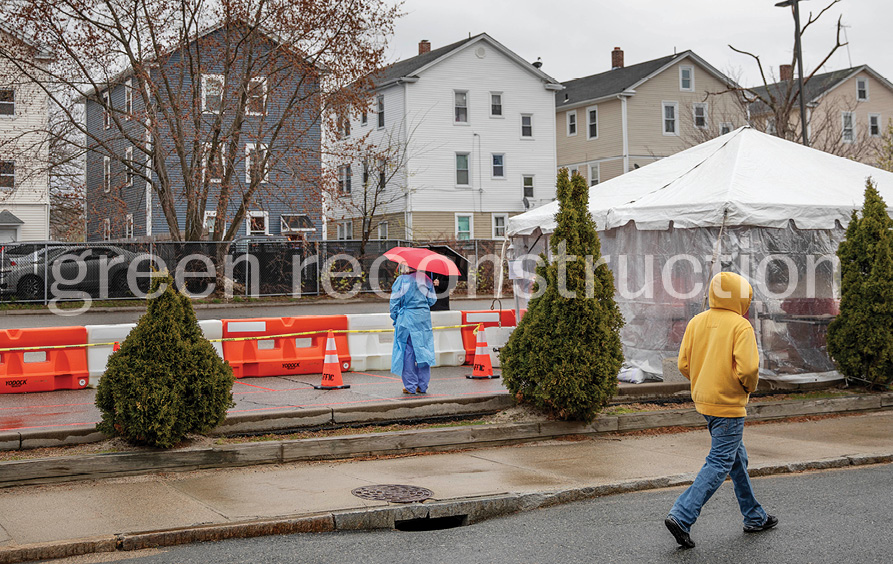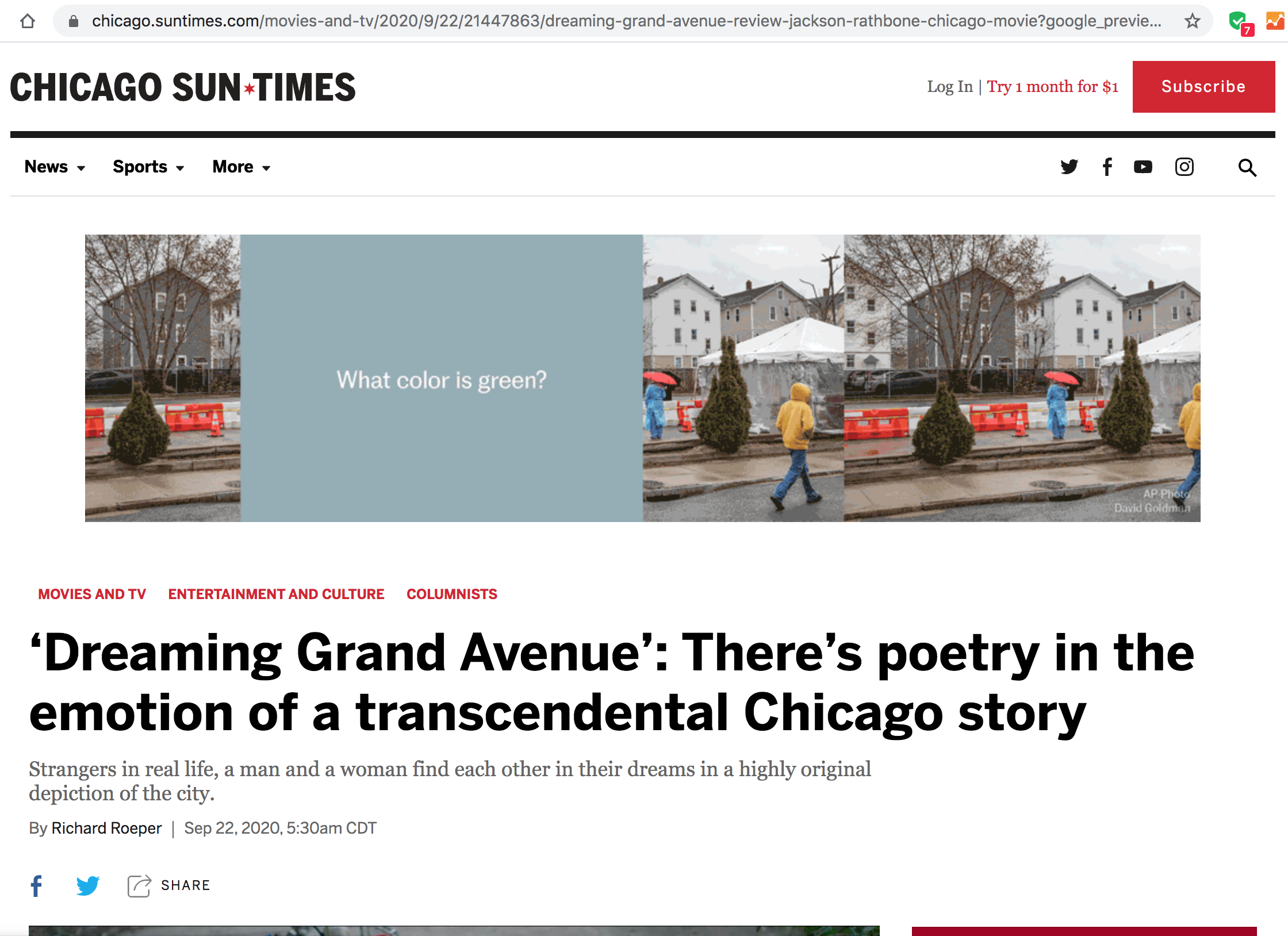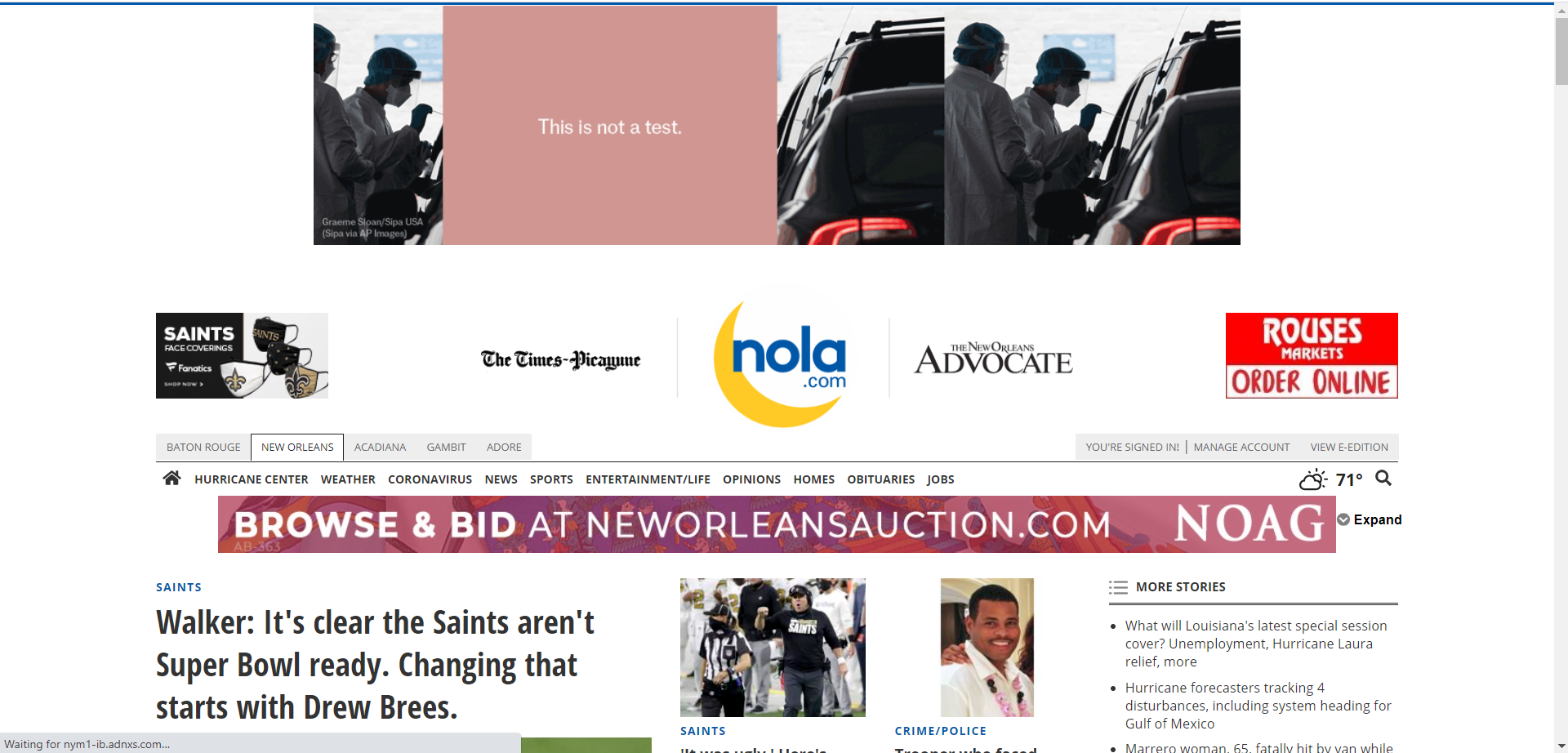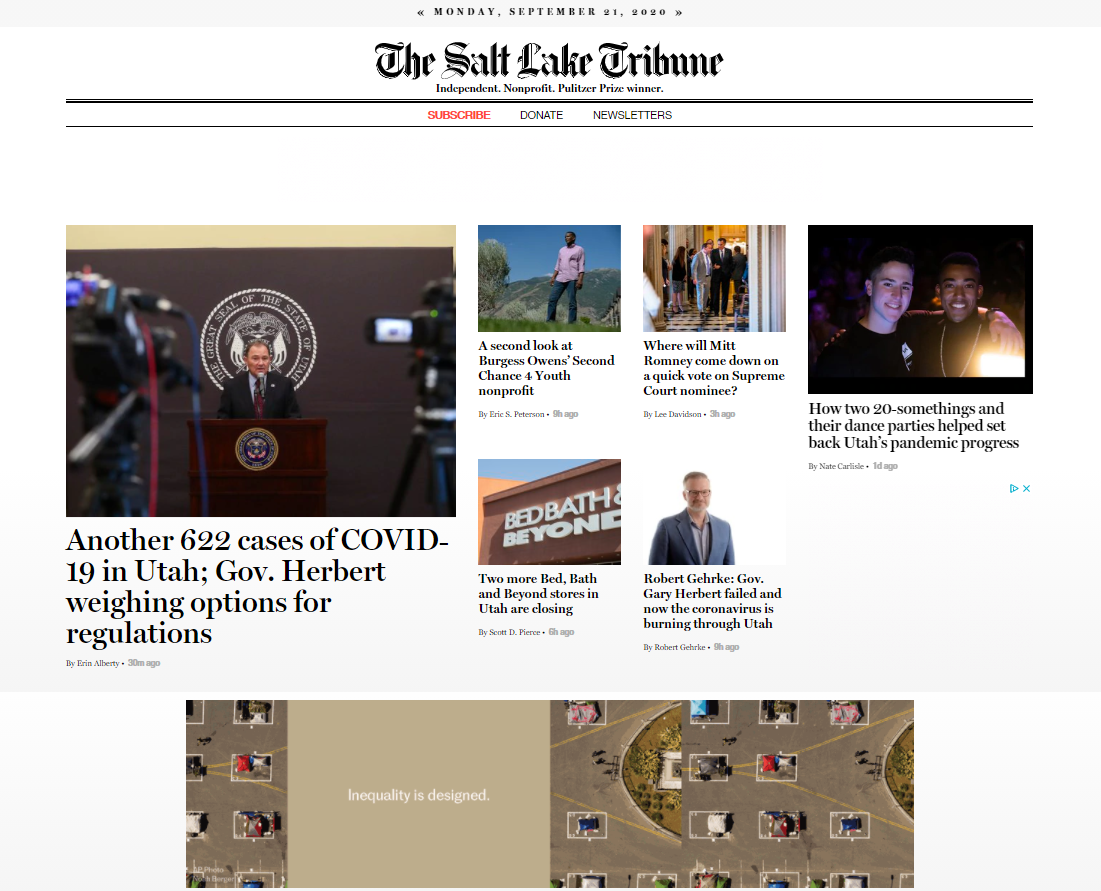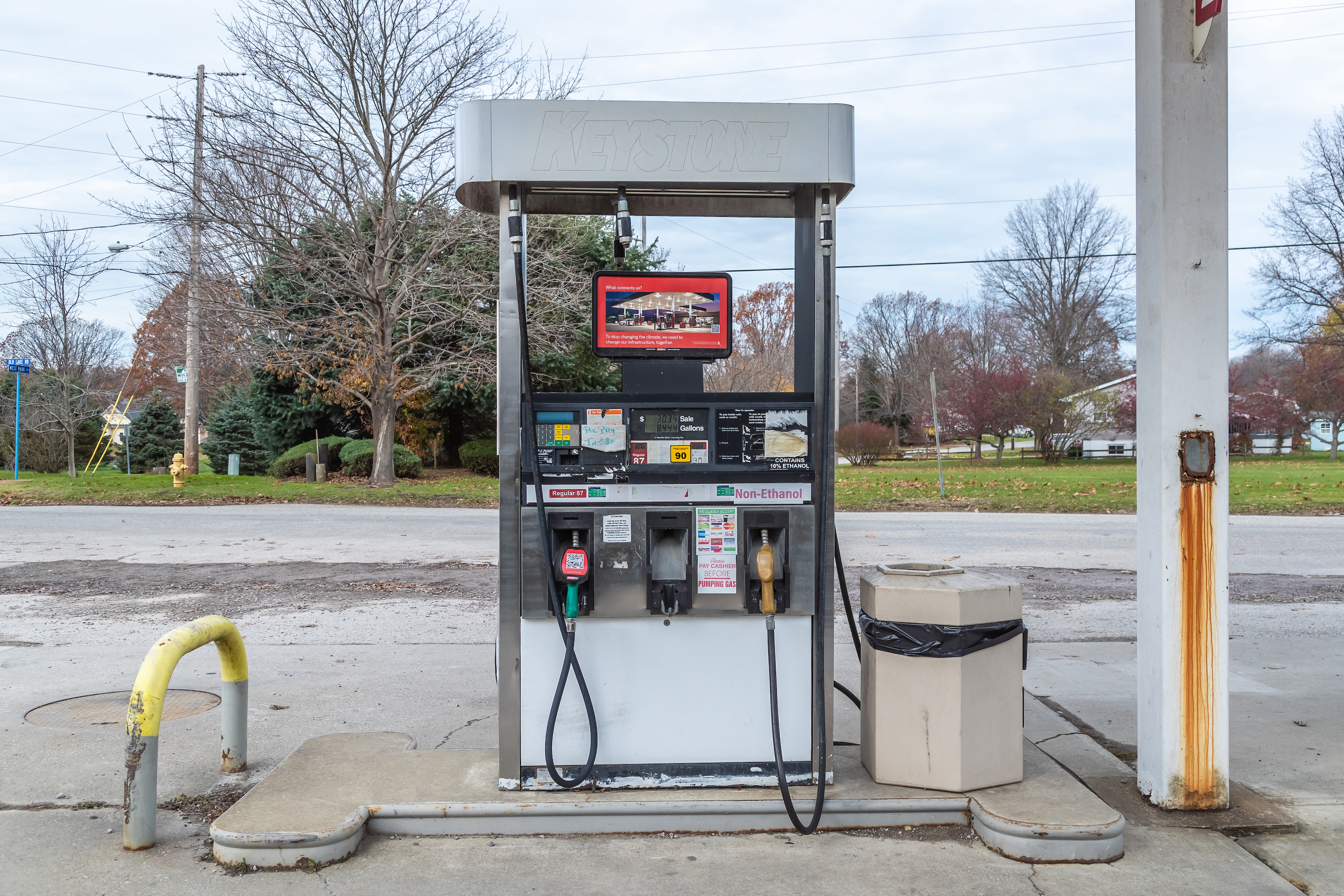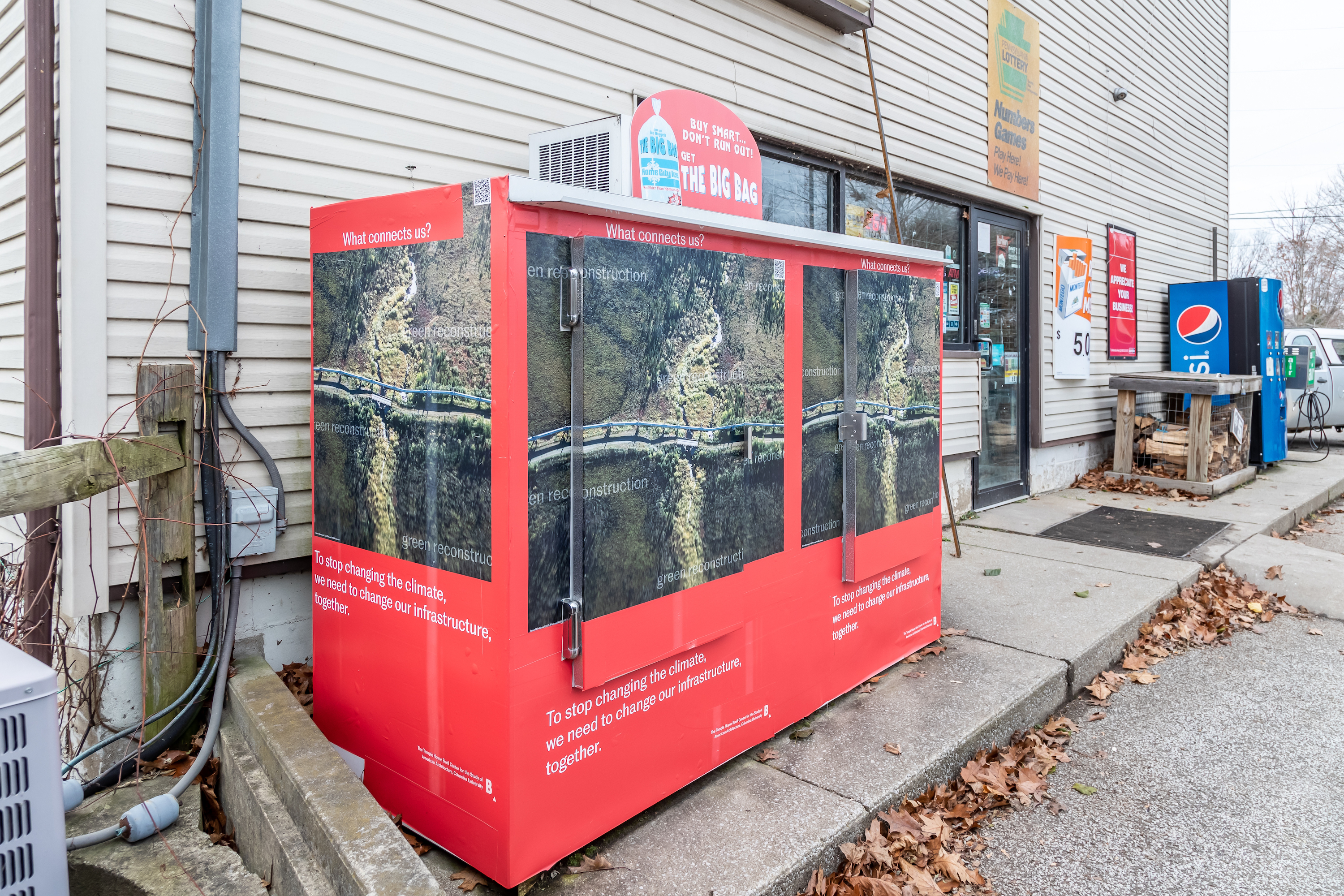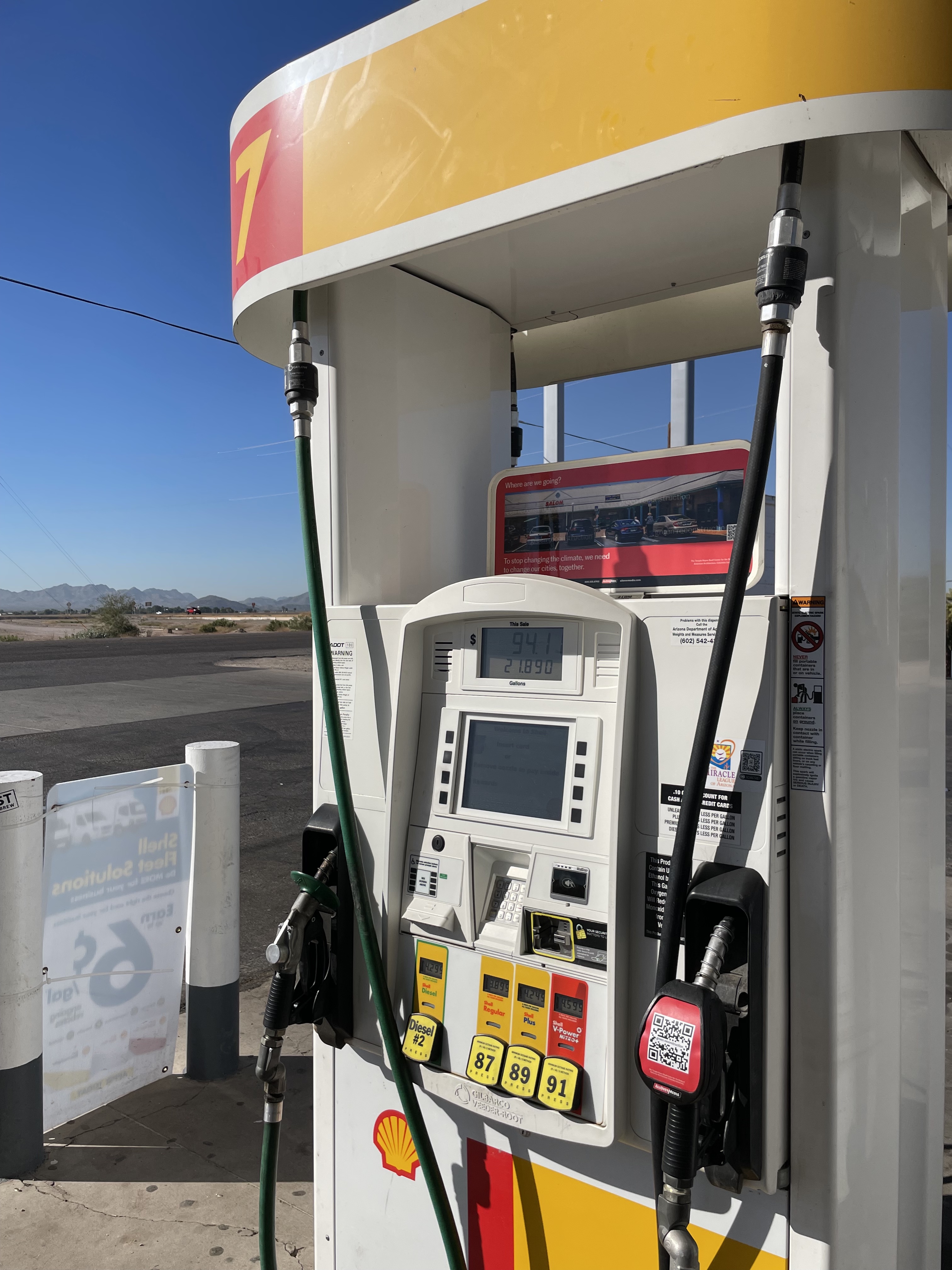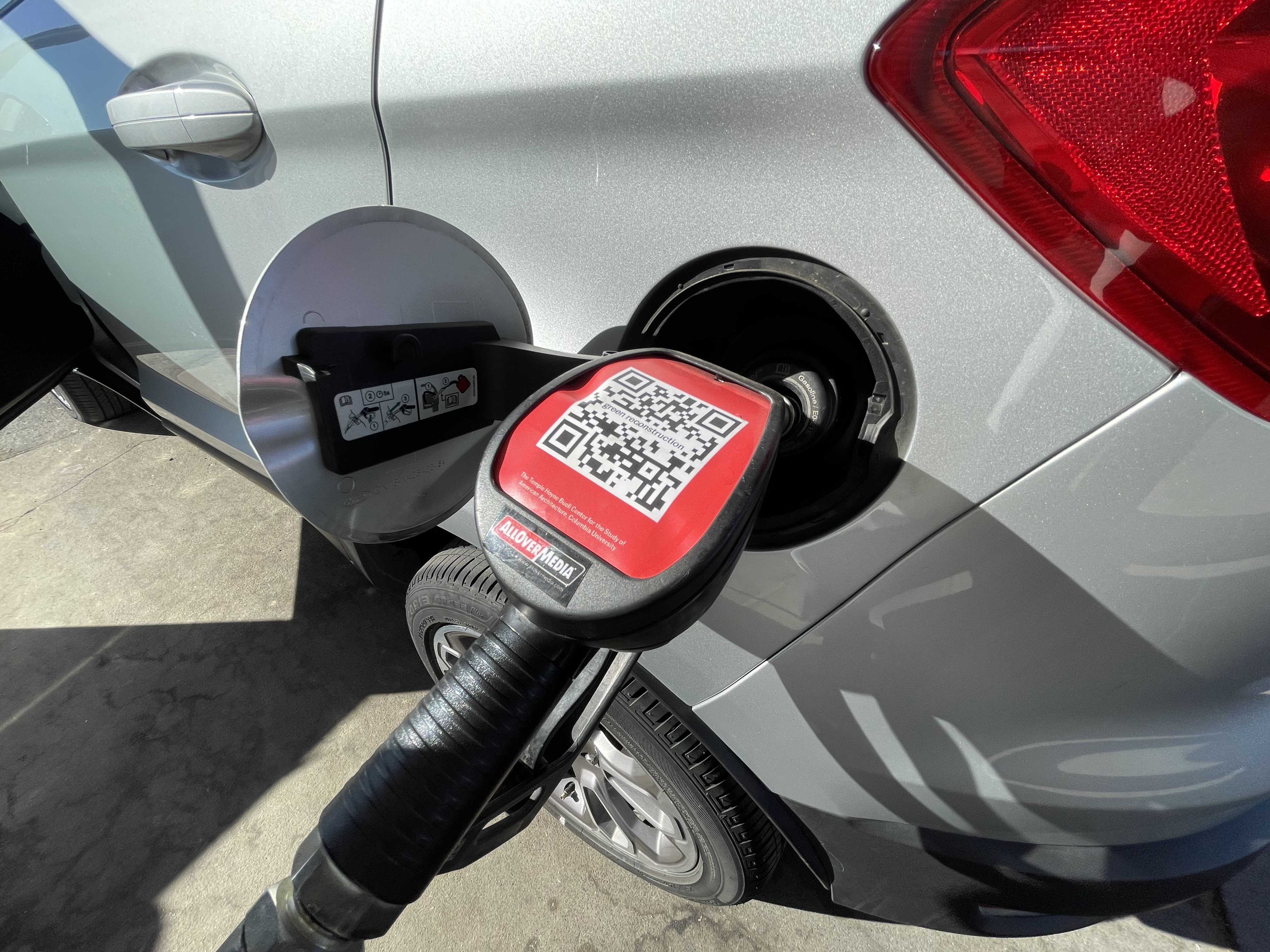Infrastructure in
America
Public Service Announcements
Green Reconstruction, which recognizes that climate justice is unthinkable without racial justice, requires a public sphere where economic redistribution is openly discussed. Media networks, and the stories told there, are among the most important tools for rebuilding our collective imagination to conceive of justice in this way.
Public service announcements (PSAs) borrow private networks for the purposes of public pedagogy. In a related spirit, the Buell Center has created two campaigns, which are available to share in whole or in part. While both have been distributed through social media (Instagram | Twitter), we have further circulated the first campaign via local newspapers across the United States, and have placed the second in situ at gas stations in three cities that were featured in the Buell Center publication Green Reconstruction: A Curricular Toolkit for the Built Environment. Though the two campaigns have different, intersecting areas of focus—the first reflecting on the COVID-19 pandemic and the second on climate change—both invite the kind of imaginative rethinking that Green Reconstruction will require.
Designed by MTWTF, the PSAs build on stock images with potentially surprising readings. As a guide to systemic change, they seek to sharpen public perceptions of hidden-in-plain-sight crises that define contemporary society, and to prompt aspirations toward the solidarities that will be required to confront them. With a special focus on the intentionally weakened systems of care—housing, healthcare, and education—in everyday American life, each of the PSAs calls for reimagining these systems, and for their subsequent reconstruction.
The format—stock images of commonplace scenes with accompanying readings—can be replicated by anyone interested. Please write to us for more information, share, and create your own. Like the world to which it aspires, Green Reconstruction is a collective project.
[Image Description: Orange barricades and covered faces punctuate an outdoor scene with grey residential architecture in the background and temporary shelter in the foreground. Sequentially appearing white text on blue background, partially obstructing the image in shifting vertical bands, reads: "What color is green? The first walk-up COVID-19 testing site in Providence was located at a public school on the city's south side, where three quarters of residents are Black or Latinx and one third live in poverty. After COVID-19 comes climate change. On the front lines of both, care work is green work. green reconstruction."]
[Image Description: A flat-roofed, single-story structure is nestled closely against a brown embankment, allowing for the narrow passage of a seven-person HAZMAT-suited team, entering through what appears to be the building’s back door. Sequentially appearing white text on brown background, partially obstructing the image in shifting vertical bands, reads: "When the system fails, it works. A disaster recovery team enters the Life Care Center in Kirkland, WA in March 2020 to clean and disinfect during the COVID-19 outbreak. If housing is healthcare, this is a housing crisis. When systems fail, they show how they work, and for whom. green reconstruction."]
[Image Description: An aerial view reveals a large area of pavement with evenly demarcated rectangles, drawn in white — twenty-one are visible. Inside each rectangle are different types, colors, and sizes of tent structures. Sequentially appearing white text on yellow background, partially obstructing the image in shifting vertical bands, reads: "Inequality is designed. Rectangles drawn on a parking lot enforce social distancing at a city-sanctioned homeless encampment in San Francisco during the COVID-19 pandemic. The peaceful rationality of the solution masks the violence of the plan. green reconstruction."]
[Image Description: Darkly shaded silhouettes—of masked medical professionals on the left, and of two reflective personal automobiles in a line on the right—contrast sharply against a bright exterior beyond. One professional holds a thin swab in one hand, which extends into the window of the front car, an SUV, where its end is invisible. Sequentially appearing white text on brown background, partially obstructing the image in shifting vertical bands, reads: "This is not a test. At a COVID-19 drive-through testing facility in Washington, DC in April 2020, the automobile becomes PPE. When the plan is not to plan, austerity is a way of life. green reconstruction."]
[PSA Image Descriptions: A bright red frame surrounds the image, with white text in the frame reading "What have we learned?" above the image, and reading "To stop changing the climate, we need to change how we work, together." below it.
In the first PSA, a person in a hard hat is visible from behind standing on a ladder amongst a tangle of metal ductwork, using what looks to be a drill at one of the duct’s joints. The worker’s tool belt is full and their hoodie is brown.
In the second PSA, two workers in yellow hazard suits and boots—both largely smeared with a black substance—shovel similarly colored material into large clear plastic bags. The workers’ faces are obscured, and the sky behind them is a steely grey.
In the third PSA, a group of around eight small children are escorted under a willow tree, by hands and by harnesses, across a dirt yard toward a playground. Together with the adults that are escorting them, all present have their backs to the camera and wear neon safety vests.
Institutional information, including a QR code, is in the bottom right of each PSA.]
[PSA Image Descriptions: A bright red frame surrounds the image, with white text in the frame reading "What connects us?" above the image, and reading "To stop changing the climate, we need to change our infrastructure, together." below it.
In the first PSA, a deep blue twilight sky rests above and behind a brightly lit metal canopy, covering an area where cars are able to fuel up when connected to at least six pump stations. One white car, presumably connected to a pump, sits on the asphalt in the background.
In the second PSA, dark grey-blue water anchors a lighter grey-blue sky, with at least six large metal wind turbines connecting the two in the foreground, middle ground, and background.
In the third PSA, seen from high in the air, a seemingly large pipeline snakes from the left to the right, across a field of varying shades of green. In the middle, running from the top to the bottom of the image, a waterway offers a delicate, or not-so-delicate, counterpoint to the infrastructure under which it flows.
Institutional information, including a QR code, is in the bottom right of each PSA.]
[PSA Image Descriptions: A bright red frame surrounds the image, with white text in the frame reading "Where are we going?" above the image, and reading "To stop changing the climate, we need to change our cities, together." below it.
In the first PSA, seen from high above, a multitude of highways pass over and under one another, each covered with cars moving across the frame in every direction. The city through and over which the roadways pass is barely visible underneath and around them.
In the second PSA, it’s a sunny day, and four cars are parked on black asphalt in front of a small strip mall with a salon and arcade amongst its tenants. Two people can be seen entering the premises on the right side of the image.
In the third PSA, between five and ten nearly identical homes run along the right side of the image, receding into the background in parallel with a receding street. Parked in front of most of the homes are shiny cars, all either red or grey. Trashcans, seemingly awaiting attention, pepper the driveways.
Institutional information, including a QR code, is in the bottom right of each PSA.]
